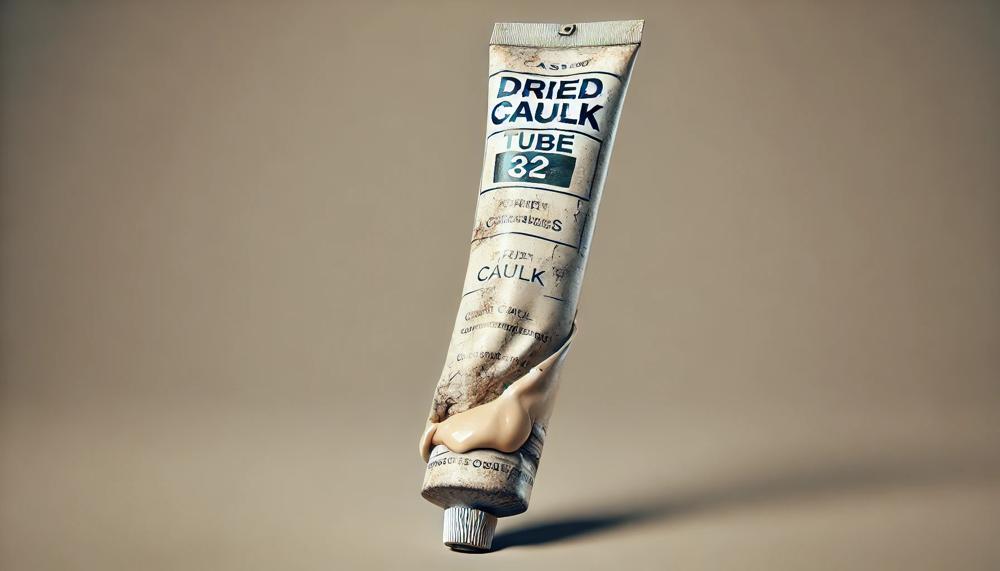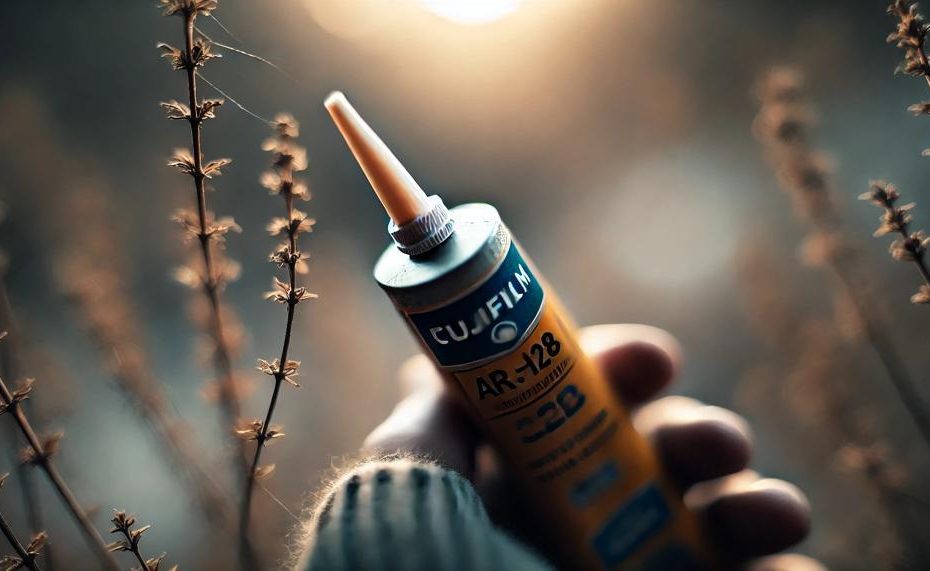Anyone who’s tackled home improvement projects knows the frustration of dealing with dried caulk in a tube. You’re ready to seal those gaps and cracks, only to find the caulk has hardened and won’t budge. But don’t toss that tube just yet. There are simple and effective methods to salvage your caulk and keep your project on track.
Here are the key takeaways for getting dried caulk out of a tube:
- Use Heat: Soften the caulk by submerging the tube in hot water for 10-15 minutes or using a hairdryer on the lowest setting.
- Caulk Softener: Apply a caulk softener or remover to break down the dried material, making it easier to squeeze out.
- Natural Solutions: White vinegar can help soften dried caulk. Wrap a vinegar-soaked cloth around the nozzle and let it sit for several hours.
- Cutting the Dried Part: Carefully use a utility knife to cut off the dried portion of the caulk, then use heat or a softener to deal with the rest.
- Prevention: Store caulk tubes properly by cleaning the nozzle and covering it with plastic wrap before capping it, to prevent drying out in the first place.
By following these tips, you can avoid the annoyance of dried caulk and ensure your home improvement projects go smoothly. Let’s dive into each method in more detail, so you can choose the best one for your situation.
Contents
- 1 How To Get Dried Caulk Out Of Tube?
- 2 How Does Caulk Dry Out in a Tube?
- 3 Using Heat to Soften Dried Caulk
- 4 Removing Dried Caulk with a Caulk Softener/Remover
- 4.1 Step 1: Prepare the Area
- 4.2 Step 2: Choose the Right Caulk Softener/Remover
- 4.3 Step 3: Apply the Caulk Softener/Remover
- 4.4 Step 4: Wait for the Softener/Remover to Work
- 4.5 Step 5: Remove the Softened Caulk
- 4.6 Step 6: Clean Up the Tube and Surrounding Area
- 4.7 Step 7: Dispose of the Waste Properly
- 5 Natural Methods for Softening Dried Caulk
- 6 Cutting Off Dried Portions of the Tube
- 7 Preventing Dried Caulk in Tubes: Proper Storage Techniques
- 8 Conclusion
How To Get Dried Caulk Out Of Tube?
Removing dried caulk from a tube can be done effectively with the right tools and techniques. Here are the most effective methods:
Using a Caulk Remover Tool
A caulk remover tool is specifically designed to extract dried caulk from tubes. These tools have a sharp blade on one end and a hook on the other, allowing you to scrape out hardened caulk without damaging the tube.
Tools and Materials Needed:
Caulk remover tool
| Method | Tools/Materials | Description |
| Using a Caulk Remover Tool | Caulk remover tool | A specialized tool with a blade and hook for scraping out dried caulk. |

Heat Gun
A heat gun can soften dried caulk, making it easier to remove. Direct the heat at the nozzle for a few seconds until the caulk becomes pliable.
Tools and Materials Needed:
- Heat gun
- Cloth or paper towel
| Using a Heat Gun | Heat gun, cloth or paper towel | Soften the caulk with heat, then wipe away. |
Boiling Water
Submerging the nozzle of the tube in boiling water for about 30 seconds can also soften the caulk. This method is useful if you don’t have a heat gun.
Tools and Materials Needed:
- Pot
- Water
- Stove
| Boiling Water | Pot, water, stove | Heat the tube nozzle in boiling water to soften the caulk. |
Vinegar
Vinegar is a household item that can soften dried caulk. Soak a cloth in white vinegar and wrap it around the nozzle, letting it sit for about 30 minutes before attempting to remove the caulk.
Tools and Materials Needed:
- White vinegar
- Cloth
| Vinegar | White vinegar, cloth | Wrap the vinegar-soaked cloth around the nozzle to soften the caulk. |
Caulk Solvent
Caulk solvents are specially formulated to dissolve dried caulk. Apply the solvent according to the product instructions and use protective gloves while handling it.
Tools and Materials Needed:
- Caulk solvent
- Protective gloves
| Caulk Solvent | Caulk solvent, protective gloves | Apply the solvent to dissolve the hardened caulk. |
These methods ensure that you can remove dried caulk from a tube effectively, saving both the material and your money.
How Does Caulk Dry Out in a Tube?
The process of caulk drying out in a tube is due to a chemical reaction involving the caulk’s primary ingredients – typically polyurethane, silicone, or acrylic – and moisture in the air. This reaction, known as curing, is essential for the caulk to form a strong seal once applied.
However, if caulk is left unused in the tube, it continues to cure, leading to it drying out and becoming unusable.
Why Does This Happen?
Caulk dries out in a tube primarily because of the following reasons:
- Exposure to Air: Once a tube of caulk is opened, air enters the tube. The moisture in the air reacts with the caulk’s ingredients, causing it to start curing. Even if the nozzle is sealed after use, some air may remain inside, continuing the curing process.
- Temperature Variations: High temperatures can speed up the curing process. If the tube is stored in a warm area, the caulk can dry out faster. Conversely, very cold temperatures can slow down or halt the curing, which might seem beneficial, but fluctuating temperatures can degrade the caulk’s quality.
- Humidity Levels: High humidity levels introduce more moisture into the tube, accelerating the curing process. Even in a sealed tube, humidity can affect the caulk, leading to it drying out quicker.
- Improper Storage: Storing the tube improperly, such as in areas with extreme temperature or humidity fluctuations, can also lead to premature drying. Ensuring the tube is stored in a cool, dry place helps extend its shelf life.
Preventive Measures:
- Always seal the nozzle tightly after use.
- Store the tube in a cool, dry place.
- Consider using a caulk saver cap to prevent air from entering the tube.
- If the caulk is not frequently used, try to purchase smaller tubes to reduce waste.
Understanding these factors can help DIY enthusiasts manage their caulk better and avoid wastage.
| Factor | Effect on Caulk | Preventive Measure |
| Exposure to Air | Starts the curing process | Seal nozzle tightly |
| Temperature Variations | Accelerates or slows curing | Store in cool, stable temperatures |
| Humidity Levels | Introduces excess moisture | Store in a dry place |
| Improper Storage | Leads to premature drying | Use caulk saver caps, buy smaller tubes |
By addressing these factors, you can prolong the life of your caulk and ensure it remains usable for your home improvement projects.
Using Heat to Soften Dried Caulk
Using heat to soften dried caulk in a tube can make your DIY tasks much easier and save you from the hassle of buying a new tube. Here’s a step-by-step guide on how to do it effectively:
| Step | Action | Tips |
| 1 | Gather Materials | Heat gun/hair dryer, pliers, scraper/putty knife, cloth/paper towel |
| 2 | Heat Application | 6 inches away, 2-3 minutes, move tool slowly |
| 3 | Caulk Removal | Use pliers or scraper, avoid tube damage |
| 4 | Clean Up | Wipe residue, repeat if necessary |
| 5 | Safety Tips | Avoid toxic fumes, wear gloves and goggles |
| 6 | When Heat Doesn’t Work | Consider a new tube |
Removing Dried Caulk with a Caulk Softener/Remover
To effectively use a caulk softener/remover for removing dried caulk from a tube, follow these steps:
Step 1: Prepare the Area
Clear any debris or loose caulk around the dried caulk. Protect nearby surfaces or objects from potential damage by covering them with drop cloths or plastic sheets.
Step 2: Choose the Right Caulk Softener/Remover
Select a suitable caulk softener/remover. Consult a professional at your local hardware store to find the right product for your specific caulk type.
Step 3: Apply the Caulk Softener/Remover
Follow the product instructions carefully. Apply the softener/remover evenly over the dried caulk using a small brush or applicator. Ensure thorough coverage for effective softening.
Step 4: Wait for the Softener/Remover to Work
Allow the softener/remover time to break down the dried caulk. This duration can vary from a few minutes to several hours, based on the product and caulk thickness. Check the product instructions for the recommended waiting period.
Step 5: Remove the Softened Caulk
Once the caulk is softened, use a putty knife or scraper to gently remove it from the tube. Be cautious not to damage the tube during this process. Work slowly and carefully.
Step 6: Clean Up the Tube and Surrounding Area
Wipe down the inside of the tube and the surrounding area with a damp cloth or paper towel to remove any residue. This prevents future clogs.
Step 7: Dispose of the Waste Properly
Dispose of the caulk waste according to local regulations. Some softeners/removers may be hazardous. Follow all product instructions for safe disposal.
Natural Methods for Softening Dried Caulk
To tackle the stubborn issue of dried caulk in a tube, several natural and effective methods can be employed. These approaches are not only eco-friendly but also safe for users. Below are some reliable techniques:
| Method | Ingredients | Instructions |
| Heat Application | Hot water or Hairdryer | Warm the tube until the caulk softens. |
| Vinegar Soak | Vinegar | Soak for a few hours or overnight. |
| Lemon Juice | Lemon Juice | Soak for a few hours or overnight, then scrub. |
| Vegetable Oil | Vegetable Oil | Soak for a few hours or overnight, then wipe. |
| Mayonnaise | Mayonnaise | Apply and let sit for a few hours or overnight, then wipe. |
| Rubbing Alcohol | Rubbing Alcohol | Soak for a few hours or overnight, then wipe. |
Using these natural methods might take more time compared to chemical-based products, but they are safer for both the user and the environment. It’s advisable to conduct a small test first to ensure compatibility with the specific type of caulk you’re dealing with.
Cutting Off Dried Portions of the Tube
The best method for cutting off dried caulk from the tube without damaging the remaining usable portion is to use a sharp utility knife or a caulk-specific cutter. These tools are designed to smoothly cut through the dried caulk without harming the still-usable caulk in the tube.
Here’s a step-by-step guide to ensure you do it right:
- Prepare the Blade: Ensure your utility knife or caulk cutter has a sharp and clean blade. A dull or dirty blade can create jagged cuts and potentially damage the remaining caulk.
- Warm the Tube: Place the tube of dried caulk in warm water for a few minutes or use a hairdryer on low heat to soften the caulk. This makes it easier to cut and reduces the risk of breakage.
- Cutting Technique:
- Hold the tube firmly in one hand.
- Guide the blade along the edge of the dried caulk.
- Make a few gentle passes until you cut through the hardened caulk.
- Alternative Tools:
- If you don’t have a utility knife or caulk cutter, you can use wire cutters or pliers. However, these require more effort and caution.
- Carefully grip the dried caulk and squeeze until it breaks off.
- Safety Tips:
- Always start cutting from the top of the dried caulk towards the bottom. This prevents debris from falling into the remaining usable caulk.
- Wear gloves and protective eyewear to avoid injury.
Preventing Dried Caulk in Tubes: Proper Storage Techniques
Preventing dried caulk in tubes involves proper storage techniques to keep the material fresh and usable for future projects. Here are some effective methods:
Seal the Tip with Plastic and a Rubber Band
Wrap the tip of the caulk tube with a small piece of plastic.
Secure the plastic with a rubber band, ensuring it’s tight.
Roll the rubber band towards the tip, leaving a small gap to squeeze out any remaining air.
Squeeze a small dollop of caulk into the plastic to create an airtight seal.
Store in a Cool, Dry Place
Keep the caulk tube in a cool, dry location. Avoid areas with high humidity or direct sunlight, which can cause the caulk to dry out faster.
Use a Caulk Saver or Cap
Purchase caulk savers or caps designed to seal the tip of the tube. These are specifically made to prevent air from entering and drying out the caulk.
Refrigerate
For long-term storage, you can refrigerate the caulk tube. Ensure it’s tightly sealed and placed in a plastic bag to prevent moisture from getting in.
Apply Petroleum Jelly
Another effective method is to apply a small amount of petroleum jelly around the nozzle before sealing it. This extra layer helps prevent air from reaching the caulk.
Conclusion
Encountering dried caulk in a tube can be a frustrating hiccup in your home improvement projects, but there are practical solutions to salvage the situation. Using heat, such as submerging the tube in hot water or applying a hairdryer, can soften the caulk, making it easier to squeeze out. For a more potent solution, a caulk softener or remover can break down the hardened material. Natural remedies like wrapping the nozzle in a vinegar-soaked cloth for several hours can also do the trick.
For those preferring a more hands-on approach, carefully cutting off the dried portion with a utility knife and then using heat or softeners can be effective. Preventing caulk from drying out is equally important; always clean the nozzle after use, cover it with plastic wrap, and store the tube in a cool, dry place.
By adopting these strategies, you can efficiently deal with dried caulk and keep your projects on track.




